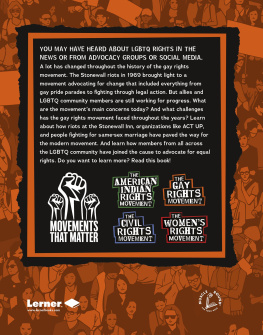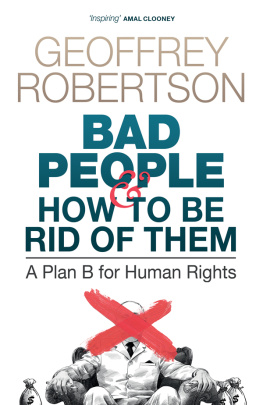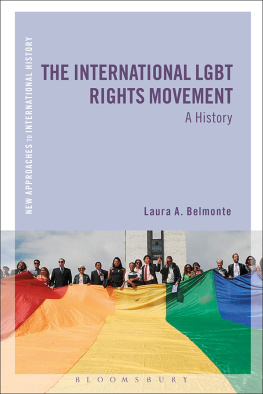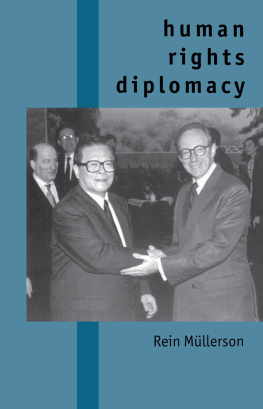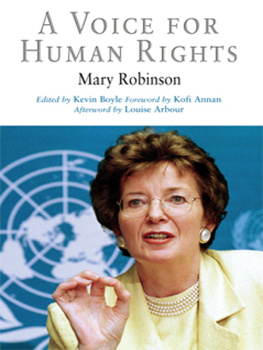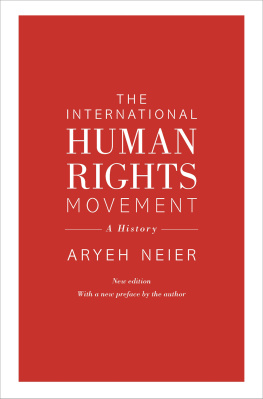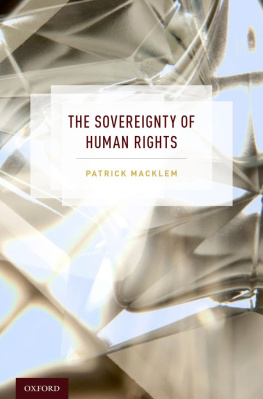THE
INTERNATIONAL
HUMAN
RIGHTS
MOVEMENT
THE
INTERNATIONAL
HUMAN
RIGHTS
MOVEMENT
A History
Aryeh Neier

Copyright 2012 by Princeton University Press Published by Princeton University Press, 41 William Street, Princeton, New Jersey 08540 In the United Kingdom: Princeton University Press, 6 Oxford Street, Woodstock, Oxfordshire OX20 1TW
press.princeton.edu
All Rights Reserved
LIBRARY OF CONGRESS CATALOGING-IN-PUBLICATION DATA
Neier, Aryeh, 1937
The international human rights movement : a history / Aryeh Neier.
p. cm.
Includes bibliographical references and index.
ISBN 9780691135151 (cloth)ISBN 0691135150 (cloth) 1. Human rights. 2. Human rightsHistory. 3. Human rights advocacyHistory. I. Title.
JC571.N377 2012
323dc23 2011043994
British Library Cataloging-in-Publication Data is available
This book has been composed in Garamond Premier Pro
Printed on acid-free paper.
Printed in the United States of America
1 3 5 7 9 10 8 6 4 2
Contents

Acknowledgments

Many colleagues in the three organizations with which I have been professionally associated for nearly half a centurythe American Civil Liberties Union, Human Rights Watch, and the Open Society Foundationsshaped my thinking and contributed to my knowledge of the human rights movement. They are too numerous to name here, but I express my gratitude to them for what they taught me and for taking part with me in many struggles for human rights. Also, I offer my thanks to the many brave men and women whose efforts to promote human rights took place in far more difficult and dangerous circumstances than those in which I did my work and whose experiences are described in this book.
I express particular gratitude to Leonard Benardo and James Goldston, my colleagues at the Open Society Foundations, and to Professors Andrew Nathan and Eric Weitz, for reading the manuscript and for making critical comments. It is, I think, a much better book because of the changes that I made as a result of their comments. Perhaps it would have been better still, with fewer errors, if I had made more. I also benefited greatly from the editorial pen of Eva Jaunzems, and I thank her, Brigitta van Rheinberg, and their colleagues at Princeton University Press for the conscientious professionalism and generous spirit in which they dealt with the book and with me.
I have been fortunate to have a superb staff in my office at the Open Society Foundations, a staff made up of Claudia Hernandez, Virginia Brannigan, Barbara Meeks, and George Hsieh. Virginia Brannigan did the lions share of the work on the manuscript, but the others all pitched in from time to time. I am deeply grateful to them.
Finally, I am grateful to Yvette, my life partner, for her indulgence in allowing me to organize our lives over an extended period to make it possible for me to work on this book. This book is dedicated to Yvette.
Aryeh Neier
1

The Movement
ON THE MORNING OF JULY 15, 2009, NATALYA ESTEMIROVA, A 50-year-old researcher for the Russian human rights organization Memorial and former history teacher who had systematically reported on torture, disappearances, and murders in her native Chechnya for nearly two decades, was abducted as she left her home in Grozny and forced into a car. Her bullet-riddled body was found later by the side of a road. She had become a victim of just the kind of crime that she had so often documented.
For a brief period, the murder of Estemirova was an important news item worldwide. Few outside Russia had even known her name, but a great many now recognized that her death would have serious consequences. Chechnya has a well-earned reputation as a very dangerous place. An unusually large number of journalists, humanitarian workers, and human rights researchers have lost their lives there in the past two decades. Members of professions used to working in some of the worlds most dangerous places have learned to avoid Chechnya. Memorials researchers, led by Estemirova, were virtually alone by the time of her murder in keeping the world informed about the ongoing violent abuses of human rights in the territory. Would even Memorial be able to sustain that reporting after her death? A question hangs over her execution, the most recent in a series of killings of those still willing to chronicle Chechnyas horrors, wrote a New York Times reporter, who described her as both a trusted source and friend. Is the accounting of the human toll now over? Without her, will
Though the murder of Natalya Estemirova soon disappeared from news accounts, overtaken by other outrages, among those who paid particular attention to her death and remembered it were thousands of men and women in all parts of the world who do similar work in their own communities. Though only a relatively small number investigate human rights abuses in places as dangerous as Chechnya, a significant number take the risk that they may suffer some form of reprisal: a threat, harassment by officials, a libel suit, an arrest, an assault, or perhaps an attack on a parent or a child. Murder is unusualthough there are a number of cases every yearbecause it focuses more attention on those intent on silencing their critics. Yet everyone taking on responsibilities like those of Estemirova is aware that it is a possibility.
The international human right movement is made up of men and women who gather information on rights abuses, lawyers and others who advocate for the protection of rights, medical personnel who specialize in the treatment and care of victims, and the much larger number of persons who support these efforts financially and, often, by such means as circulating human rights information, writing letters, taking part in demonstrations, and forming, joining, and managing rights organizations. They are united by their commitment to promote fundamental human rights for all, everywhere. In the period since the end of World War II those rights have been recognized in such international agreements as the Charter of the United Nations, the Universal Declaration of Human Rights, and in a host of global and regional treaties. There is widespread agreement among those who identify themselves with the international human rights movement that the fundamental rights to which they are committed include a prohibition on the arbitrary or invidious deprivation of life or liberty; a prohibition on state interference with the right of all to express themselves freely and peaceably by speech, publication, assembly, or worship; the right of all to equal treatment and equal opportunity regardless of race, ethnicity, nationality, religion, or gender; and a prohibition on such cruelties as torture.
Though identifying with the international human rights movement, many of its adherents may know little or nothing about those promoting the same cause in distant places or even in parts of the world that are relatively close at hand. Even so, a large number recognize that they are part of a struggle that is underway in many places and draw strength from their awareness that they are participants in a movement that does not have boundaries, that is likely to endure, and that values their contributions.
Next page

